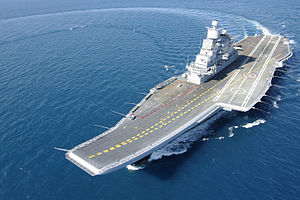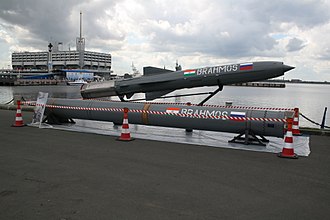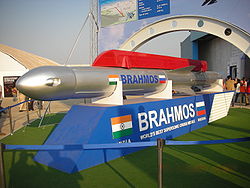There are certain decisions which, if taken in arrogant haste, can prove disastrous in the long run, almost irreversibly disastrous.
The greatest modern example of this truth is the one-child policy implemented in China in 1979. It seemingly made so much sense in that era, an era in which overpopulation was deemed a curse on poor nations. So China, in fact China of the wise brilliant Deng Xiaoping, established & implemented a one-child policy. Now 40 years later, China faces a demographic crisis; the country is now expected to be get old before it becomes wealthy or powerful. The Chinese Government is now trying unsuccessfully to persuade its women to have more children.
Putin’s folly that we discuss in this article is much smaller in scope. But its impact is now clear and very negative for Putin’s & Russia’s military & geopolitical future.
The Soviet Union began going global in their competition with the United States in late 1950s. Financially they could not compete with America but they used America’s mistakes to build important inroads and to support their own military buildup. Nothing works without money and even America cannot support its great defense companies solely with American orders. So export of expensive military equipment is the key to every country’s military development.
America in the 1950s (& for many decades after that) had chosen NaPakistan as their “ally” and supported that regime in its continuous war against India. That India was poor, much poorer than today. And that India needed a reliable supplier of military hardware and, equally important, military technology. Soviet Union stepped in and it became a marriage of almost heavenly convenience. The Soviets got a large customer, a customer whose needs & ability to buy grew with every decade and India got a reliable supplier of modern weaponry & technology.
The Soviets sold heavy tanks, armored carriers & then in 1960s allowed India to build MIG-21s in India. They sold and enabled India to build warships to enable a fledgling Indian navy to patrol India’s huge coastline & naval sphere from the Straits of Malacca to Straights of Hormuz in the Middle East. And the Indian military became the best advertisement for the efficacy of Soviet weapons. In every conflict with Napakistan, the Indian military used Soviet fighters, tanks & artillery to destroy more sophisticated & more advanced American weapons supplied to NaPak. (that pattern was repeated a few weeks ago when an Indian MIG- 21 shot down a US-supplied NaPaki F-16 in a dogfight, the first such recorded kill in military history).
Then, around the turn of the century, the leadership of Russia changed. At the same time, the Indian Navy was trying to get an aircraft carrier. While the Indian Navy was trying to get/build, the Russian Navy was trying to scale down. Enter Admiral Gorshkov, a mid-size Russian aircraft carrier from 1980s that was being deactivated “because she was too expensive to operate on a post-Cold War budget“. How perfect, right?
So, per Wikipedia, “on 20 January 2004, after years of negotiations, Russia and India signed a deal for the sale of the ship. The ship would be free, while India would pay US$800 million for the upgrade and refit of the ship, as well as an additional US$1 billion for the aircraft and weapons systems.”
But, as the Indian Navy and the Indian Defense establishment found out that they were now dealing with Putin’s Russia & not the old reliable Soviet Union. Putin’s Russia realized that they had the Indian Navy at their mercy. They decided to tighten the screws. The budget for the retrofit kept growing and delays kept building. The Indian Navy had no choice but to pay & keep paying. Finally, on June 2014, India commissioned the aircraft carrier as INS Vikram-Aaditya in the Indian Navy at a cost of $2.3 billion.
(courtesy – Wikipedia)
The other big success of the pre-Putin era was BrahMos, today’s “fastest anti-ship cruise missile in the world “with “Mach 2.8-3.0 speed“.
In 1998, the Indian & Russian governments formed BrahMos corporation with India owning 50.5% stake & Russia owning 49.5% stake. BrahMos now has Air-launched, Ship-launched & land-launched versions that are both anti-aircraft & anti-ship. (“Brah” from India’s Brahma-Putra river & “Mos” from Russia’s Moskva river). And “a hypersonic version of the missile, BrahMos-II, is also presently under development with a speed of Mach 7-8 to boost aerial fast strike capability. It is expected to be ready for testing by 2020“.
(courtesy – Wikipedia)
Given the success of joint Indo-Russian BrahMos, India signed an agreement with Russia to jointly develop a fifth-generation stealth fighter, the SU-57. Perhaps the success of BrahMos doomed this joint venture, with the Russian side reportedly dragging its feet on joint technology development & sharing. Finally, last year India withdrew from this project.
India may not lose much by withdrawing from the SU-57 venture. Today’s India is the fastest growing economy in the world & is expected to remain the world’s largest arms buyer over the next ten years. And today’s India has far better relationships & even partnerships with the West.
What about Putin’s Russia? As Stratfor wrote this past week,
- India’s withdrawal from the joint development and production of the Su-57 fighter aircraft last year has cast doubt on Russia’s ability to sustain the program in a meaningful way or at an acceptable cost. As a result, Russia has sought — albeit unsuccessfully so far — to export the Su-57 more widely in an effort to find a partnership that would make the aircraft viable.
And India’s withdrawal from the SU-57 program is only one example of India’s turn away from Russia for major long-term military orders. Though the power of the Indian Air Force is still based on Russia’s Sukhoi air-dominance fighters, India has not shown a serious interest in buying MIG-35 or the next generation Russian aircraft.
The Indian Air Force was not only the largest multi-decade customer for Russian aircraft, it was also the best advertisement for Russian aircraft in actual military combat. But today’s Indian Air Force is not willing to be a mere buyer; it is only interested in partnership with suppliers that will Make in India. Consider Lockheed’s offer to not only make the most advanced F-16s in India for the Indian Air Force but also to move the entire F-16 production line from America to India. Dassault, the French supplier of Mirage 2000 & the fifth-generation Rafale, is in advanced talks to build Rafale in India for the Indian Air Force.
What has this done to the Russian Aerospace industry? Stratfor writes,
- “According to recent figures, the performance of Russia’s aerospace sector is declining precipitously. In 2018, for instance, Russian aircraft and spacecraft makers produced 13.5 percent less than in 2017. And there’s been no letup in 2019 either: In the first two months of the year, aerospace output plummeted 48 percent year on year .”
This is not just a money or an industry issue. What else does Russia have to offer apart from its military technology? A tailspin for Russia’s Defense Industry could prove to be a tailspin for Russia’s status in the world. As Stratfor writes,
- “The decline in Russia’s defense output raises concerns about the competitive strength of Russia’s defense industry in general, whose health is critical if the country is to project itself as a military power in the longer term. Russian Deputy Prime Minister Yuri Borisov attributed the reduction in output to a slowdown of orders for military systems, but projections suggest the slowdown is not just a short-term fluctuation; in fact, it’s expected to become even worse in the future. The downturn in oil prices has taken a bite out of Russia’s bottom line, squeezing spending for the military — all at a time when the country’s arms manufacturers have lost their competitive edge in the global arms market. Together, these factors ensure that Russia’s defense industry will struggle to get out of its funk.”
Meanwhile the Indian Navy, whom Putin’s Russia squeezed in the 2004 aircraft carrier deal, is now building their 3rd aircraft carrier. And their indicated preference for fighters for that carrier? Boeing F-18s & the Naval Rafale of Dassault. Russian fighters are not even being considered.
What does this to do to Russia’s own military modernization plans? Stratfor writes,
- “Ultimately, the loss of export opportunities not only complicates Russia’s efforts to finance its defense industry, it also reduces the scale at which the defense industry produces, which, in turn, decreases scale-dependent savings that accompany higher levels of production. In effect, this means that the more Russia fails to find foreign customers for specific weapon systems, the more it will become burdened with a higher relative cost per unit as it seeks to meet its own needs. The conundrum, in turn, will further limit Russia’s ability to competitively price weapons systems for export, thereby perpetuating the effect.”
But Putin’s travails have a real warning for America. A Russian defense industry in real trouble could end up being swallowed by China and that would make China a far more dangerous adversary for the US Military.
Think back to the 1930s. Had that Russia fallen to Hitler’s Nazis, the Allies might not been able to defeat that Germany. So FDR’s decision to help Stalin with weapons, materials & money ended up helping America reap major benefits & allowed a two-front war against Hitler’s Germany.
Today’s Russia & China share a very long border and neither nation trusts the other. But if Russia & China end up as allies in a conflict against America that begins in South China Sea, it would be very costly & exceedingly dangerous for America. How difficult would it be for today’s America to simultaneously fight China in Asia and fight Russia in Europe? And, unlike in 1940s, today’s Europe is virtually worthless militarily against Russia.
We now see what Putin’s arrogant folly has done to Russia. We should not now repeat that arrogant folly by forcing Putin’s Russia into China’s arms. It seems President Trump understands this but we are not sure many others do.
Send your feedback to editor@macroviewpoints.com Or @MacroViewpoints on Twitter



